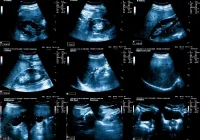Right upper quadrant ultrasound (RUQUS) is central to evaluating suspected acute cholecystitis (AC) in emergency care, yet the influence of pre-examination pain control on diagnostic accuracy remains a practical concern. Evidence drawn from a large retrospective cohort of adults presenting with abdominal pain explores whether opioid analgesia (OA) or non-opioid analgesia (NOA) affects the sonographic Murphy sign (SMS) and the reliability of imaging impressions for AC. Analyses encompass examination timing, dose ranges and downstream confirmation by pathology where available. The findings outline a measurable association between OA and indeterminate SMS assessments, as well as a higher rate of false-negative imaging results, while NOA shows no such effect. These observations inform everyday trade-offs between prompt analgesia and preserving the diagnostic yield of RUQUS.
Analgesia and the Sonographic Murphy Sign
The SMS, defined as maximal tenderness when the transducer is pressed over the sonographically localised gallbladder, is a well-recognised component of RUQUS for AC. Across 682 analysable ultrasound examinations performed by experienced technologists in a tertiary emergency setting, OA administration before scanning was associated with a statistically significant increase in indeterminate SMS reports compared with controls. By contrast, premedication with NOA did not significantly alter the distribution of positive, negative or indeterminate SMS outcomes relative to its control group.
Must Read: MRI Radiomics Predicts TLS in Gallbladder Cancer
Sensitivity and specificity analyses of SMS classification showed broadly similar performance between OA-treated and untreated patients and likewise between NOA-treated and untreated patients. However, at an institutional level the sensitivity and specificity of a positive SMS for AC across the full sample set were lower than widely published figures, a difference linked to local population characteristics and practice patterns. The dataset’s breadth, including variable analgesic dosing and a defined emergency workflow, provides a nuanced view of how pre-scan analgesia intersects with an operator-dependent sign that is nonetheless embedded in routine decision-making.
Impact on Diagnostic Accuracy and Timing
Although SMS sensitivity and specificity estimates were similar between treated and untreated cohorts, OA had clear implications for final imaging impressions. Patients who received OA prior to RUQUS were statistically more likely to receive a false-negative imaging diagnosis for AC than controls. In practical terms, the imaging report impression was negative or favoured an alternative diagnosis, yet subsequent pathological review after cholecystectomy confirmed AC. There were 24 such radiology-missed cases among those premedicated with OA, highlighting a clinically relevant discordance between imaging impression and surgical pathology.
Timing and dose considerations sharpen this association. When OA was administered within 30 minutes of the RUQUS examination, false-negative results were significantly more frequent than in patients who had not received OA. This effect was not statistically significant when more than 30 minutes elapsed between OA administration and scanning, suggesting a temporal window in which opioid effects may attenuate elicitable tenderness and influence interpretation. Notably, even lower morphine-equivalent doses under 4 mg were linked to increased false-negative rates compared with controls, indicating that the observed effect is not confined to higher dosing ranges. In contrast, NOA use showed no significant difference in false-negative rates relative to its control group, aligning with the stable SMS distribution observed with non-opioid premedication.
Implications for Emergency Care and Limitations
Taken together, these results support practical adjustments in analgesia strategy when AC is suspected and RUQUS is planned. Clinicians may choose to delay OA until after completion of RUQUS to minimise the risk of indeterminate SMS assessments and false-negative imaging impressions. If OA is deemed necessary before imaging, delaying the ultrasound by at least 30 minutes may help mitigate this risk. NOA appears to offer pain relief without compromising diagnostic accuracy in this context and may be a suitable initial option for many patients while maintaining the reliability of RUQUS findings.
The cohort reflects a real-world emergency department workflow within a diagnostic radiology training environment, with board-certified or eligible radiology and emergency staff and ultrasound performed by experienced technologists. Adult patients presenting with undifferentiated abdominal pain between January 2018 and September 2019 were included, with demographic characteristics spanning a wide age range, a predominance of female patients and diverse racial and ethnic backgrounds. Pathology data after cholecystectomy, available in a substantial subset, provided outcome confirmation for imaging-pathology comparisons. The authors note limitations that may affect generalisability, including the military treatment facility setting and the focus on SMS rather than integrating secondary sonographic signs into the primary analyses. Differences in how radiologists and emergency physicians weigh imaging and clinical features may also contribute to discordant outcomes.
RUQUS remains a pivotal tool for evaluating suspected AC, yet pre-examination opioid administration is associated with more indeterminate SMS findings and a higher rate of false-negative imaging impressions, particularly when scanning occurs within 30 minutes of dosing and even at lower morphine-equivalent doses. NOA does not show these effects and can be considered when pain control is needed ahead of imaging. For emergency teams, adopting a strategy that delays OA until after RUQUS or defers scanning for at least 30 minutes after OA, may enhance diagnostic reliability without withholding necessary analgesia. These operational choices can help align pain management with accurate, timely diagnosis, supporting safer patient pathways in acute biliary care.
Source: Emergency Radiology
Image Credit: iStock










